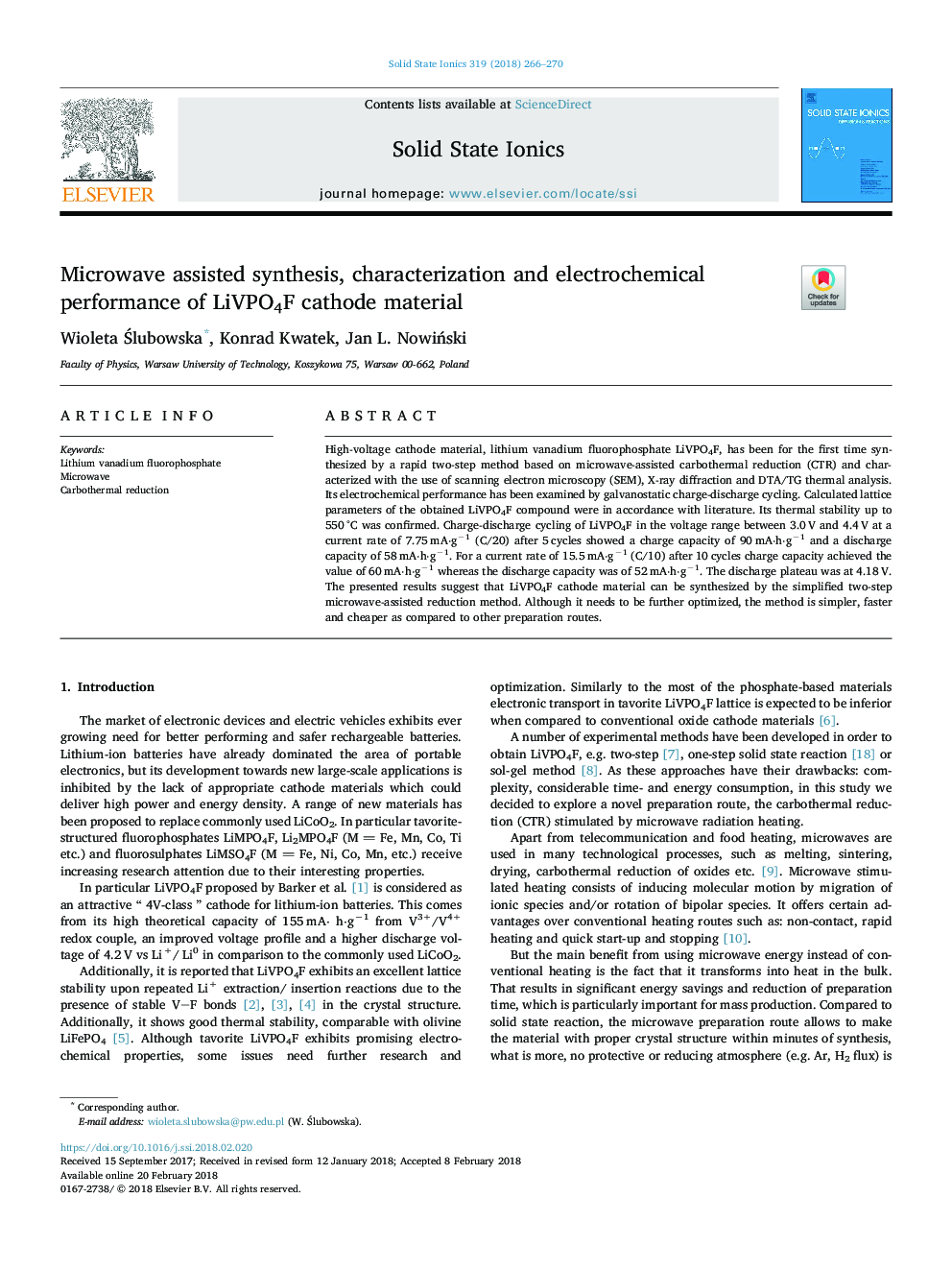| Article ID | Journal | Published Year | Pages | File Type |
|---|---|---|---|---|
| 7744416 | Solid State Ionics | 2018 | 5 Pages |
Abstract
High-voltage cathode material, lithium vanadium fluorophosphate LiVPO4F, has been for the first time synthesized by a rapid two-step method based on microwave-assisted carbothermal reduction (CTR) and characterized with the use of scanning electron microscopy (SEM), X-ray diffraction and DTA/TG thermal analysis. Its electrochemical performance has been examined by galvanostatic charge-discharge cycling. Calculated lattice parameters of the obtained LiVPO4F compound were in accordance with literature. Its thermal stability up to 550â¯Â°C was confirmed. Charge-discharge cycling of LiVPO4F in the voltage range between 3.0â¯V and 4.4â¯V at a current rate of 7.75â¯mAâ
gâ1 (C/20) after 5â¯cycles showed a charge capacity of 90â¯mAâ
hâ
gâ1 and a discharge capacity of 58â¯mAâ
hâ
gâ1. For a current rate of 15.5â¯mAâ
gâ1 (C/10) after 10â¯cycles charge capacity achieved the value of 60â¯mAâ
hâ
gâ1 whereas the discharge capacity was of 52â¯mAâ
hâ
gâ1. The discharge plateau was at 4.18â¯V. The presented results suggest that LiVPO4F cathode material can be synthesized by the simplified two-step microwave-assisted reduction method. Although it needs to be further optimized, the method is simpler, faster and cheaper as compared to other preparation routes.
Related Topics
Physical Sciences and Engineering
Chemistry
Electrochemistry
Authors
Wioleta Ålubowska, Konrad Kwatek, Jan L. NowiÅski,
